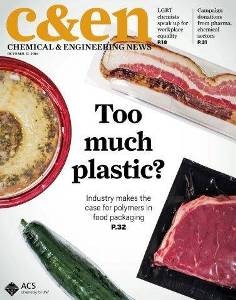Oct 20 2016
These days, grocery stores contain aisle after aisle of products encased in plastic packaging. This practice preserves food and might help prevent food waste, but does the environmental cost justify it? The cover story of Chemical & Engineering News (C&EN), the weekly newsmagazine of the American Chemical Society, looks into the matter.
 Credit: American Chemical Society
Credit: American Chemical Society
Alexander H. Tullo, a senior correspondent at C&EN, notes that there are multiple benefits to wrapping food in plastic. Plastic is lighter than metal and glass, which means more products can be loaded onto a truck, lowering the impact of transportation. Packaging also extends shelf life. An individually wrapped cucumber, for example, can last more than four times longer than if it didn’t have that plastic sleeve. This longer life could help reduce the amount of food that gets tossed — currently estimated to be a third of all food the world produces, according to the Food & Agriculture Organization of the U.N.
However, all this plastic comes with a cost. The story cites a report, released by the Ellen MacArthur Foundation in January, estimating that in 2013, industry produced 78 million metric tons of plastic packaging worldwide. Of that, 40 percent went to landfills, and nearly a third “leaked” to the environment. “Without significant action, there may be more plastic than fish in the ocean, by weight, by 2050,” the report says. At least a partial solution could come in the form of new plastics that are easier to recycle or are lighter weight. New technologies are already emerging toward those ends.